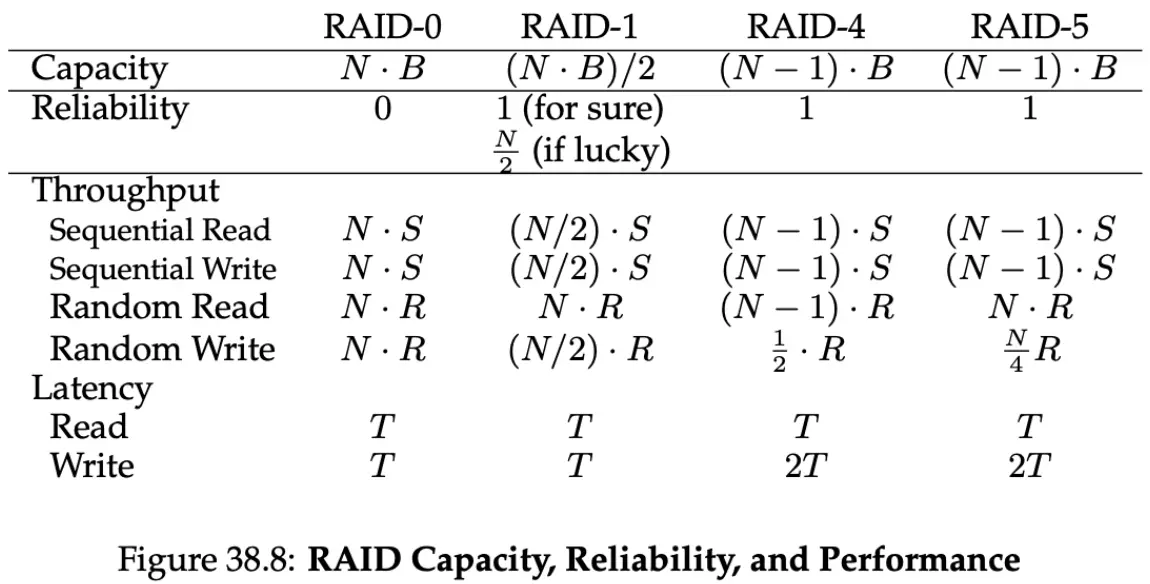What
Redundant Array of Independent Disks
A data storage virtualization technology that combines multiple physical disk drive components into one or more logical units for the purposes of data redundancy, performance improvement, or both.
How
When a file system issues a logical O request to the RAID, the RAID internally must calculate which disk (or disks) to access in order to complete the request, and then issue one or more physical I/Os to do so.
RAID Levels
- RAID 0 (Striping):
- Split data into blocks and written to multiple disks
- Better Input Output.
- No fault tolerance. A disk fails means data loss.
- RAID 1 (Mirroring):
- Written identically on two disks
- Same perf.
- Maximum fault tolerance.
- RAID 2:
- Uncommon
- bit-level striping
- complex error correction code instead of parity
- cannot serve multiple requests simultaneously
- RIAD 3:
- Similar to RAID 5, but use byte-level striping and stores parity calculations on dedicated disk.
- Cannot serve multiple requests simultaneously
- RAID 4:
- Block-level striping
- dedicated parity disk
- requires at least 3 disks and is prone to botlenecks when storing parity bits for each data block on a single drive
- RAID 5:
- Distributes data and parity information across all disks
- provides fault tolerance
- improved read performance
- slower write perf due to parity calculations
- RAID 6:
- Similar to RAID 5, but is uses two sets of parity information
- better fault tolerance in case of 2 simultaneous disk failures
- RAID 10 (1+0):
- Mirroring data across 2 sets of striped disks
- Both fault tolerance and improved performance
- RAID 50 (5+0):
- striping data across multiple RAID 5 arrays
- improved perf and fault tolerance
